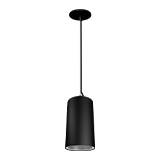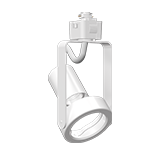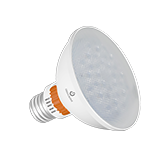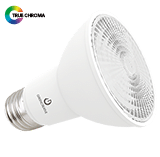We have been enjoying naturally different lighting levels during a day from sunrise to sunset ever since the beginning of human life. With the introduction of artificial lighting and advance of LED technology, flexibility and possibility for lighting control becomes easier and more versatile. This article will provide you some basic information regarding the dimming applications, popular dimming methods and how to choose dimmable LED products for your lighting solutions.
Why light dimming is necessary?
Dimmable lighting design has become a critical factor in almost all architectural and constructional projects. People need different lighting levels depending on the specific environments they are in or various tasks they are performing. Light and shades basically formed our perception of everything. Various lighting levels together with the contrast they created are closely related to how much details we can perceive, how efficient we can perform our tasks, as well as how we feel in specific environments.
We need brighter and more energizing light when working, while dimmed and cozy light for relaxing. The need of complementary light within the same space is also changing along with the amount of natural sunlight at different time of the day. When watching a movie in home theater or a presentation in a conference room, the background lighting needs to be dimmed down to minimum for more focus. In retail stores or shopping outlets, brighter and more intensive lighting towards specific products can guide attention and gather interest of visitors thus promoting sales. Depending on the usage and occupancy of a space, dimmable LED lighting products are chosen for greater energy and cost savings as well.
Typical dimming ranges needed for different applications
While full dimming possibilities from 100%-0 is always preferred, optionnal ranges could also be narrowed down considering other factors such as cost optimization.
Typical dimming ranges communicated by manufactures include dim levels down to 20%, 10%, 5% and 1% or 0 (off). These percentages refer to the level of measured light output after dimming compared to initial full light output. To understand how they will feel like in actual applications, we also need to understand the differences between the measured light output and perceived light output.
• Measured light output is the quantifiable value of light output measured by a light meter or similar device.
• Perceived light output is the amount of light that our eye and brain interprets as a result.
What claimed by the manufactures as dim down to 20% could be perceived by final users as 45% or higher because human eyes perceive more light at lower light levels. Also, we are more sensible in detecting the illuminance differences at low light levels, as a result, it might not be detectable between 90% and full light output, but differences between 5% and 1% could be felt as more “obvious”.
To make sure the dimming result can meet the expectations of final users, it is recommended to test with real samples. In cases where it is difficult or impossible, the below typical dimming ranges in three groups can be considered for meeting basic needs of the applications.
- Down to 20% or 10% as lighting management for applications with limited dimming requirements such as warehouses, lounge, waiting rooms, hallways or corridors etc.
- Down to 5% as high performance dimming for applications with more expectations for creating ambience such as restaurants, living rooms, bathrooms etc.
- Down to 1% or 0 (off) as architectural dimming for applications with superior control requirements such as theaters, museums, conference or functional rooms etc.
Existing dimming methods for LED light
In order to make right decisions for dimmable LED light, especially in the case of retrofitting projects, where usually the dimming control system is already existing and not easy to change, we need to know some basics of the commonly existing dimming methods.
Generally, there are below different dimming technologies existing in the market.
Mains Voltage Phase Dimming systems dim the light by cutting-off part of the supply thus altering the voltage in the sine wave mains supply. Depending on how much is the cut-off, the mains voltage dimmable lighting products is dimmed to be either brighter or darker. Mains voltage phase dimming could be further differentiated into forward phase dimming and reverse phase dimming.
» Forward phase dimming, also known as TRIAC or leading-edge dimming, is to cut off the supply of electricity at the start of the sine wave. This dimming system is cheap and simple and is commonly existing since it has been working especially well with traditional incandescent light sources.
» Reverse phase dimming, also known as ELV or trailing-edge dimming, is to cut off the supply at the end of the sine wave from backwards. Reverse phase dimming system has lower peak currents and generally works better with electronic low voltage or LED lighting fixtures.

0-10V Dimming system was developed originally for fluorescent lighting control and now widely adopted by LED lighting systems. It dims the light by sending an analogue signal to the fixture which has a direct low voltage value of 0-10V. Depending on the voltage value received, the 0-10V dimmable lighting products generate minimum (0-10%) or maximum (100%) lighting output.
0-10V dimming system is more friendly with LED lighting applications compared to line voltage dimming systems, with more smooth and predictable dimming performance, as well as wider dimming range at the low-end output level. Since there is already IEC (International Electrotechnical Commission) standard for regulating the protocol of 0-10V dimming, LED drivers and dimmers even from different manufactures could be found easily working with each other with full compatibility. 0-10V dimming system is also compatible with most daylight harvesting and occupancy control systems for further energy saving possibilities.

DualDim Technology from GREEN CREATIVE allowing the LED lighting products to be dimmed with either TRIAC/ELV line voltage or 0-10V dimming controls. Taking the guesswork out of auditing an existing space and providing optimal flexibility while minimizing un-expected installation issues in the field. Whether your project is residential, commercial, mixed-use, new construction or remodel, DualDim LED lighting products allow you to use one luminaire and simplify all phases of the job from specification to ordering to installation.

SelectDrive Technology with integrated dimming designs can provide final users easy way of altering and customizing the light output for their unique lighting requirements in the field without the need of additional dimming controls. Products powered by SelectDrive technology from GREEN CREATIVE allow the final users to choose different levels of light outputs with simple flip of the integrated switch, greatly reduced the complex of products selections for different lighting design projects, enabled compliance with certain local building regulations and rebate programs, as well as provided possibilities of future light outputs change without changing of the products installed.

Digital Dimming systems refer to all dimming systems that transform the dimming signal into bits and controls the lighting in digital format. Digital dimming works better with large numbers of luminaires and can specifically address to one particular light source connected in the same wiring system. This dimming system is more suitable where complicated dimming and/or color changing requirements existing or where integrated dimming control center installed for controlling all light systems within the buildings. Examples are DALI systems and DMX512 systems etc.
Common problems met when dimming LED light
While dimmable light could bring various benefits, unexpected compatibility issues or poor dimming performance between LED lighting products and separate dimming controls might be experienced in field applications still. Besides compatibility issues, commonly met poor dimming phenomena include Pop-on, Drop-out, Dead-travel, Audible noise or Flicker etc.
Pop-on: LED lighting products cannot be turned on gradually but suddenly pop up directly to a high-level output when the dimmer is switched up.
Drop-out: LED lighting products are dimmed down to a certain level then suddenly switched off when diming down further.
Dead-travel: Change of the dimming control cannot drive to the corresponding change in the light output from the LED lighting products.
Audible noise or Flicker are also common problems met when dimming LED lighting products especially when the LED driver and the dimming controller cannot work with each other in complete compatibility. Known different manufactures might have various tolerances for noise or flicker phenomena when claiming their product compatible with certain controls, try it out using real samples or mock-up installations are useful for making your own judgement and decisions.
Checklist for selecting dimmable LED light
In order to minimize the possible undesired poor dimming performances and making the right purchasing decisions for your lighting solutions where dimmable LED products involved, we provided you below set of checklist as additional tool of consideration. While it is always recommended to contact your suppliers for compatibility specifications details and/or even try the actual compatibility result with samples and mock-up installations for assurance.
√ Check whether any dimming control device already existing and installed in your lighting system. If yes, which type of dimming method it is, and make sure to look for new LED light working with the same method and compatible with the actual dimming device installed. Most manufactures will publish the list of commonly existing dimmers that can work with their dimmable LED lamps or fixtures.
√ Check what is the dimming requirement of the applications you are designing and expectations of the final users addressing to, then make sure to select LED lighting products capable of dimming to the desired levels with continuous and smooth performance, as well as meeting the expectations of final users.
√ Check what is the maximum and minimum load allowed by your dimming control device, and make sure your new retrofit LED lamps or fixtures wired to that dimming control are working within the range allowed.
√ Check the long-term plan or possible versatile usages of the space for your lighting design project. Try to leave flexibility or possibility for further upgrading along with the technology advance.
GREEN CREATIVE offers you a wide range of LED bulbs and fixtures with different dimming possibilities to meet your lighting design requirements, no matter it is simple and basic dimming for industrial and public areas, or more advanced and articulated dimming for commercial and entertaining applications. Check all the dimmable LED products from us or contact your local Sales Representative for learning more dimmable lighting solutions. Click below buttons to learn the product offers from different dimming designs.

















































